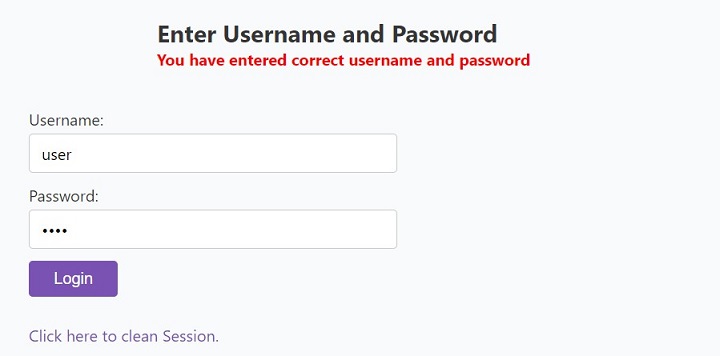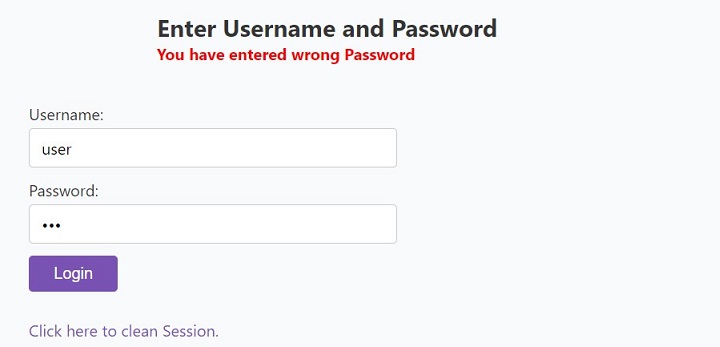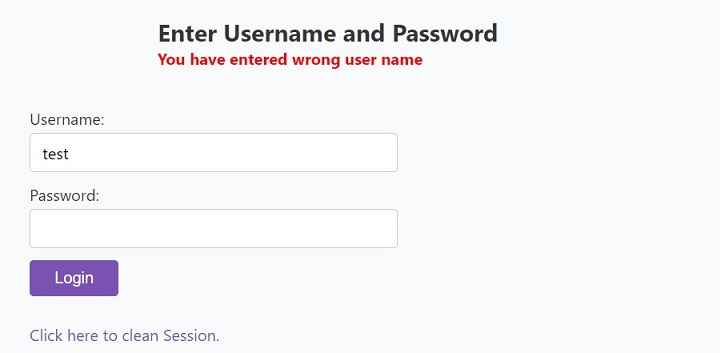
- PHP 教程
- PHP - 首頁
- PHP - 簡介
- PHP - 安裝
- PHP - 歷史
- PHP - 特性
- PHP - 語法
- PHP - Hello World
- PHP - 註釋
- PHP - 變數
- PHP - Echo/Print
- PHP - var_dump
- PHP - $ 和 $$ 變數
- PHP - 常量
- PHP - 魔術常量
- PHP - 資料型別
- PHP - 型別轉換
- PHP - 型別混合
- PHP - 字串
- PHP - 布林值
- PHP - 整數
- PHP - 檔案與 I/O
- PHP - 數學函式
- PHP - Heredoc 和 Nowdoc
- PHP - 複合型別
- PHP - 檔案包含
- PHP - 日期和時間
- PHP - 標量型別宣告
- PHP - 返回型別宣告
- PHP 運算子
- PHP - 運算子
- PHP - 算術運算子
- PHP - 比較運算子
- PHP - 邏輯運算子
- PHP - 賦值運算子
- PHP - 字串運算子
- PHP - 陣列運算子
- PHP - 條件運算子
- PHP - 展開運算子
- PHP - 空值合併運算子
- PHP - 比較運算子(太空船運算子)
- PHP 控制語句
- PHP - 決策
- PHP - If…Else 語句
- PHP - Switch 語句
- PHP - 迴圈型別
- PHP - For 迴圈
- PHP - Foreach 迴圈
- PHP - While 迴圈
- PHP - Do…While 迴圈
- PHP - Break 語句
- PHP - Continue 語句
- PHP 函式
- PHP - 函式
- PHP - 函式引數
- PHP - 按值傳遞
- PHP - 按引用傳遞
- PHP - 預設引數
- PHP - 具名引數
- PHP - 可變引數
- PHP - 返回值
- PHP - 傳遞函式
- PHP - 遞迴函式
- PHP - 型別提示
- PHP - 變數作用域
- PHP - 嚴格型別
- PHP - 匿名函式
- PHP - 箭頭函式
- PHP - 可變函式
- PHP - 區域性變數
- PHP - 全域性變數
- PHP 超全域性變數
- PHP - 超全域性變數
- PHP - $GLOBALS
- PHP - $_SERVER
- PHP - $_REQUEST
- PHP - $_POST
- PHP - $_GET
- PHP - $_FILES
- PHP - $_ENV
- PHP - $_COOKIE
- PHP - $_SESSION
- PHP 檔案處理
- PHP - 檔案處理
- PHP - 開啟檔案
- PHP - 讀取檔案
- PHP - 寫入檔案
- PHP - 檔案是否存在
- PHP - 下載檔案
- PHP - 複製檔案
- PHP - 追加檔案
- PHP - 刪除檔案
- PHP - 處理 CSV 檔案
- PHP - 檔案許可權
- PHP - 建立目錄
- PHP - 列出檔案
- 面向物件 PHP
- PHP - 面向物件程式設計
- PHP - 類和物件
- PHP - 建構函式和解構函式
- PHP - 訪問修飾符
- PHP - 繼承
- PHP - 類常量
- PHP - 抽象類
- PHP - 介面
- PHP - 特性
- PHP - 靜態方法
- PHP - 靜態屬性
- PHP - 名稱空間
- PHP - 物件迭代
- PHP - 封裝
- PHP - Final 關鍵字
- PHP - 過載
- PHP - 克隆物件
- PHP - 匿名類
- PHP Web 開發
- PHP - Web 概念
- PHP - 表單處理
- PHP - 表單驗證
- PHP - 表單郵件/URL
- PHP - 完整表單
- PHP - 檔案包含
- PHP - GET 和 POST
- PHP - 檔案上傳
- PHP - Cookie
- PHP - Session
- PHP - Session 選項
- PHP - 傳送郵件
- PHP - 過濾輸入
- PHP - Post-Redirect-Get (PRG)
- PHP - 快閃記憶體訊息
- PHP 高階
- PHP - MySQL
- PHP.INI 檔案配置
- PHP - 陣列解構
- PHP - 編碼規範
- PHP - 正則表示式
- PHP - 錯誤處理
- PHP - Try…Catch
- PHP - Bug 除錯
- PHP - 針對 C 開發人員
- PHP - 針對 PERL 開發人員
- PHP - 框架
- PHP - Core PHP 與框架
- PHP - 設計模式
- PHP - 過濾器
- PHP - JSON
- PHP - 異常
- PHP - 特殊型別
- PHP - 雜湊
- PHP - 加密
- PHP - is_null() 函式
- PHP - 系統呼叫
- PHP - HTTP 認證
- PHP - 交換變數
- PHP - Closure::call()
- PHP - 過濾後的 unserialize()
- PHP - IntlChar
- PHP - CSPRNG
- PHP - 期望
- PHP - Use 語句
- PHP - 整數除法
- PHP - 已棄用的特性
- PHP - 已刪除的擴充套件和 SAPI
- PHP - PEAR
- PHP - CSRF
- PHP - FastCGI 程序
- PHP - PDO 擴充套件
- PHP - 內建函式
- PHP 有用資源
- PHP - 速查表
- PHP - 問答
- PHP - 快速指南
- PHP - 線上編譯器
- PHP - 有用資源
- PHP - 討論
PHP - 登入示例
一個典型的 PHP web 應用程式在登入前會對使用者進行身份驗證,方法是詢問使用者的憑據,例如使用者名稱和密碼。然後將這些憑據與伺服器上可用的使用者資料進行核對。在本示例中,使用者資料以關聯陣列的形式提供。以下 PHP 登入指令碼進行了說明 -
HTML 表單
程式碼的 HTML 部分顯示了一個簡單的 HTML 表單,該表單接受使用者名稱和密碼,並將資料釋出到自身。
<form action = "<?php echo htmlspecialchars($_SERVER['PHP_SELF']); ?>" method="post">
<div>
<label for="username">Username:</label>
<input type="text" name="username" id="name">
</div>
<div>
<label for="password">Password:</label>
<input type="password" name="password" id="password">
</div>
<section style="margin-left:2rem;">
<button type="submit" name="login">Login</button>
</section>
</form>
PHP 身份驗證
PHP 指令碼解析 POST 資料,並檢查 users 陣列中是否存在使用者名稱。如果找到,它將進一步檢查密碼是否與陣列中註冊的使用者相對應。
<?php
if (array_key_exists($user, $users)) {
if ($users[$_POST['username']]==$_POST['password']) {
$_SESSION['valid'] = true;
$_SESSION['timeout'] = time();
$_SESSION['username'] = $_POST['username'];
$msg = "You have entered correct username and password";
} else {
$msg = "You have entered wrong Password";
}
} else {
$msg = "You have entered wrong user name";
}
?>
使用者名稱和相應的訊息將新增到 $_SESSION 陣列中。系統會提示使用者輸入相應的郵件,告知他輸入的憑據是否正確。
完整程式碼
以下是完整程式碼 -
Login.php
<?php
ob_start();
session_start();
?>
<html lang = "en">
<head>
<meta charset="UTF-8">
<meta name="viewport" content="width=device-width, initial-scale=1.0">
<link rel="stylesheet" href="loginstyle.css">
<title>Login</title>
</head>
<body>
<h2 style="margin-left:10rem; margin-top:5rem;">Enter Username and Password</h2>
<?php
$msg = '';
$users = ['user'=>"test", "manager"=>"secret", "guest"=>"abc123"];
if (isset($_POST['login']) && !empty($_POST['username'])
&& !empty($_POST['password'])) {
$user=$_POST['username'];
if (array_key_exists($user, $users)){
if ($users[$_POST['username']]==$_POST['password']){
$_SESSION['valid'] = true;
$_SESSION['timeout'] = time();
$_SESSION['username'] = $_POST['username'];
$msg = "You have entered correct username and password";
}
else {
$msg = "You have entered wrong Password";
}
}
else {
$msg = "You have entered wrong user name";
}
}
?>
<h4 style="margin-left:10rem; color:red;"><?php echo $msg; ?></h4>
<br/><br/>
<form action = "<?php echo htmlspecialchars($_SERVER['PHP_SELF']); ?>" method="post">
<div>
<label for="username">Username:</label>
<input type="text" name="username" id="name">
</div>
<div>
<label for="password">Password:</label>
<input type="password" name="password" id="password">
</div>
<section style="margin-left:2rem;">
<button type="submit" name="login">Login</button>
</section>
</form>
<p style="margin-left: 2rem;">
<a href = "logout.php" tite = "Logout">Click here to clean Session.</a>
</p>
</div>
</body>
</html>
Logout.php
要登出,使用者可以點選連結到logout.php
<?php
session_start();
unset($_SESSION["username"]);
unset($_SESSION["password"]);
echo '<h4>You have cleaned session</h4>';
header('Refresh: 2; URL = login.php');
?>
輸入“https:///login.php”啟動應用程式。以下是不同的場景 -
正確的使用者名稱和密碼

密碼錯誤

使用者名稱錯誤

當用戶點選底部的連結時,會話變數將被刪除,並重新顯示登入螢幕。
廣告